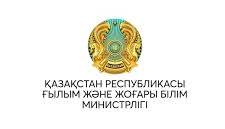Author Guide
INSTRUCTION FOR ONLINE SUBMISSION OF ARTICLES
Articles are accepted by the editors through the online system for submitting and reviewing articles.
Authors must submit articles in two files (Word only):
- an article designed in accordance with the requirements of the editorial board of the journal;
- an article without specifying the author's full name and place of work for blind review.
The article should consist of the following sections:
Abstract (150-200 words)
- research objectives;
- methods that have been investigated;
- achieved results;
- brief conclusions.
Keywords (Keywords) (10-15 words)
Introduction
- Relevance of the research topic;
- the purpose of the study, tasks;
- conflicts in theory, methodology, practice or research findings;
- gaps in research or theoretical schools;
- the point of view of the author in a review of the literature.
Methods and materials
- a description of the methods and materials that the authors used specifically for this article.
Results
- description of the author’s observation and results;
- the novelty of the results achieved;
- The results should be consistent with the stated goals and objectives of the article;
- description of the idea, the concept that has found application (specifics)
- tables, figures (if they are).
Discussion
- comparison of research results with similar in other works;
- writing about differences or similarities (or about differences and similarities);
- agreed with some facts, disagreed with others;
- to analyze and explain the results;
- make a generalization and evaluation of the results;
- determine the scientific concept, from the position of which one can explain the results;
- make an assessment of the reliability of the results.
Conclusions
- systematization of the results that were explained in the discussion;
- summary of the results (most important);
- a description of the practical and scientific value of the study;
- Description of the possible areas of application of the research results.
The editors of the journal asks the authors to follow the requirements below. Articles drawn up in violation of the requirements are not accepted for publication and are returned to the authors.
The article, including bibliography, tables, should not exceed 10 pages of text typed on a computer (Microsoft Word editor), the minimum article size is 6 pages. An electronic version of the article must be submitted to the editors.
The following requirements are imposed on the paper:
Fields of the manuscript should be: upper and lower - 25 mm, left and right - 20 mm. Font - Times New Roman, size - 11 pt. Line spacing is single. Justified. Indention - 0.8 cm.
In the upper left corner is given the UDC article,
In the center are given:
- Surnames and initials of the authors (in three languages, e.g.: S.T. Әsetov, C.T. Acetov, S.T. Assetov)
- The full name of the institution represented by the author (indicating the city) and email address. If the authors are from different institutions, then the correspondence between the author and the institution is established by superscripts, for example:
S.T. Asanov1, S.B. Kasenov2
Academician E.A. Buketov Karaganda State University (E-mail:…)
2 Al-Farabi Kazakh National University, Almaty (E-mail:)
- Title of the article (bold) in Kazakh, Russian, English.
An abstract (150-200 words) is placed in front of the text of the article, in Kazakh, Russian and English languages that meet the requirements of information content, richness and quality of translation. The abstract should not duplicate the introductory or final sections of the article. The text of the abstract should not contain references to the list of references, abbreviations, abbreviations, obscure notation.
Keywords (10-15 words) should be presented after the annotation, which may consist of individual words and phrases.
Next is the text of the article.
The cited literature should be given by a general list at the end of the article with the reference in the text of the article by an ordinal number, for example, [1]; [2]. References are given in the order of mention in the article.
The first reference in the text to the literature should have the number [1], the second - [2], etc. When referencing a result from a book, its number from the list of references and (separated by semicolons) the page number on which this result is published is indicated. For example: [8; 325]. References to unpublished works are not allowed.
The list of used literature is also made out in English.
A full bibliographic description of the used literature is given and is made out as follows:
For books: Surnames and initials of authors. Title. - Place of publication: Publishing House, Year of publication. - Number of pages.
For example:
- Sapargaliyev G.S. Constitutional Law of the Republic of Kazakhstan: Academic Course. Univ e 3rd, with additional. – Almaty, Zheti-Zhargy, 2014. - 544 p.
- Nurusheva A.A. Legal forms of foreign participation in the activities of legal entities of the Republic of Kazakhstan. Monograph. - Karaganda: Bolashak-Baspa, 2008. - 223 p.
For journal articles: Names and initials of the authors. Title of the article // Title of publication. (Series). - The year of publishing. - Tome. - Number. - Pages.
For example:
- Shamshinurova S.M. Prospects for securing the legal status of the investigating judge // International scientific journal "Science and peace". - 2014. - Volume 2. - №3 (7). - P.176-179.
- Shambilova G.K. Legislation // Vestn. Karaganda University. Ser. Law. - 2010. - №2 (58). - P.17-20.
For conference materials, proceedings, legal acts, etc .: Names and initials of the authors. Title of the article // Title of publication: Publication type. - Location, year of publication. - Tome. - Number. - Pages.
For example:
- Studenikina M.S. Actual problems of protection of the housing rights of minors in the Republic of Kazakhstan // "Constitutional and legal mechanisms to protect the rights of minors and their implementation in the Republic of Kazakhstan": Materials of the republican scientific-practical conference. - Karaganda LLP «Arka and K", 2015. - P. 17-21.
- Universal Declaration of Human Rights of December 10, 1948 // Collection of documents on international law. - Almaty: SAK, 1998. - T. 1. - S. 388–394.
- Code of the Republic of Kazakhstan "On Marriage (Matrimony) and Family" of December 26, 2011 № 518-IV // http://adilet.zan.kz/rus/docs/K1100000518
The bibliographic description in English must be transliterated in Latin letters. After the name of the work, Latin letters indicate the translation in English in brackets. Transliteration can be done using: www.translit.net - type "similar to the Ministry of Internal Affairs" - then automatic transliteration is carried out.
Examples of design and requirements for transliteration of letters of the Russian and Kazakh languages are given below:
Books
Author. (Year of publication). The title of the book is transliterated [Name of the book in English]. City: Publisher.
For example:
Grankin I.V. The legislative process: textbook./ I.V. Grankin. - M .: Progress, 2015 .-- 156 p., 2015 .-- 156 p.
Grankin, I.V. (2015). Pravotvorcheskii protsess [Law-making process]. Moscow: Progress [in Russian].
Periodicals
Magazines:
For example:
Onyschuk I.I. Using the results of legal monitoring in parliamentary activity: international experience in the democratization of lawmaking // Legal Technique. - 2014. - No. 8. - P. 148–151.
Onyshchuk, I.I. (2014). Ispolzovanie rezultatov pravovoho monitorinha v parlamentskoi deiatelnosti: mezhdunarodnyi opyt demokratizatsii pravotvorchestva [Using the legal monitoring results in the parliamentary work: international lawmaking experience of democratization]. Yuridicheskaia tekhnika - Legal Technology, 8, 148-151 [in Russian].
Collections of scientific works:
For example:
Alimbekov M.T. EurAsEC Court as a platform for comprehensive integration / Sat: Civil law: articles, comments, practice. (Issue 40). - Almaty: Rarity, 2012. - S. 70–71.
Alimbekov, M.T. (2012). Sud YevrAzES kak platforma vsestoronnei integratsii [EurAsEC Court as a comprehensive integration platform]. Grazhdanskoe zakonodatelstvo: statii, commentarii, praktika - Civil legislation: articles, comments, practice. (40 issue) .Almaty: Raritet. [in Russian].
Conference proceedings:
For example:
Shumilov V.P. The national regime as a fundamental principle of private international law // Civil law in the system of law: Collection of international materials scientific-practical conf. (as part of the annual civilist readings). - Almaty: Scientific Research Institute of Private Law, Kazakh State Law University, 2007. - P. 501-508.
Shumilov, V.P. (2007). Natsionalnyi rezhim kak osnovopolahayushchii printsip mezhdunarodnoho chastnoho prava [National regime as a fundamental principle of international private law]. Proceedings from Civil law in the system of law: a collection of international scientific and practical conference (within the annual civil readings) ’07. Mezhdunarodnaia nauchno-prakticheskaia konferentsiia (v ramkakh ezhehodnykh tsivilisticheskikh chtenii). - International scientific and practical conference. (pp. 501-508). Almaty: NII chastnogo prava KazGYUU [in Russian].
Electronic resources
For example:
Analysis of foreign experience in regulatory reforms. - [Electronic resource]. - Access mode: http://www.bagalau.kz/ru/evaluation-system/world/i2988
Analiz zarubezhnoho opyta po provedeniiu rehuliativnykh reform [Analysis of foreign experience for the regulatory reform]. bagalau.kz. Retrieved from http //www.bagalau.kz/ru/evaluation - system / world / i 2988 [in Russian].
Abstracts of dissertations and dissertations
For example:
Pilekhina E.V. Amicable agreement in the practice of the arbitration court and the court of general jurisdiction: Abstract of dissertation for the degree of candidate of legal sciences. - St. Petersburg: St. Petersburg State University, 2001 .- 25 p.
Ріlekhіnа, E.V. (2001). Mіrovoe soglаshenіe v рrаktіke аrbіtrаzhnogo sudаі sudа obshсhey yurіsdіktsіі [Settlement agreement in the practice of the arbitral tribunal and the court of general jurisdiction]. Extended abstract of candidate’s thesis. SPb .: SPbSU, 25 [Іn Russіаn].
Karabelnikova A.N. Corruption offenses: concept, signs, system, criminal legal means of counteraction: dis. ... cand. legal Sciences: 12.00.08 / A.N. Karabelnikova. - Minsk, 2013 .-- 118 s.
Karabelnikova, A.N. (2013). Korruptsionnye pravonarusheniia: poniatie, priznaki, sistema, uholovno-pravovye sredstva protivodeistviia [Corruption infringements: concept, signs, system, criminally-legal means of counteraction]. Candidate s thesis ̓. Minsk [in Russian].
Normative legal acts:
For example:
The Law of the Republic of Kazakhstan dated April 16, 2016 No. 480. “On Legal Acts”. - [Electronic resource]. - Access mode: https://online.zakon.kz/Document/?doc_id=1021546
Zakon RK ot 16 aprelia 2016 h. No. 480 “O pravovykh aktakh [Law of the Republic of Kazakhstan dated April 16, 2016, No. 480“ On Legal Acts ”]. online.zakon.kz. Retrieved from https://online.zakon.kz/Document/ doc_id = 1021546 [in Russian].
Decree of the Government of the Republic of Kazakhstan dated September 24, 2014 No. 1011 "Regulation on the Ministry of National Economy of the Republic of Kazakhstan". - [Electronic resource]. - Access mode: http://economy.gov.kz/ru/ministerstvo/polozhenie-o-ministerstve/
Postanovlenie Pravitelstva Respubliki Kazakhstan ot 24 sentiabria 2014 hoda No. 1011 "Polozhenie o Ministerstve natsionalnoi ekonomiki Respubliki Kazakhstan". [Resolution of the Government of the Republic of Kazakhstan dated September 24, 2014 No. 1011 “Regulations of the Ministry of National Economy of the Republic of Kazakhstan”]. economy.gov.kz/ru. Retrieved from http://economy.gov.kz/ru/ministerstvo/polozhenie-o-ministerstve/ [in Russian].
Information about the authors is filled in Kazakh, Russian, English.
Information about each of the authors includes the following information:
- Surname Name Patronymic (fully),
- position,
- Academic title, academic degree,
- place of work,
- town; contact details (phone, e-mail) of the author (or authors).
Attention!
Articles formatted in violation of the rules, containing a large number of grammatical and spelling errors, or using automatic translation into English/Kazakh/Russian, are not accepted by the editorial board and will be returned to the authors without being reviewed.
The use of technical means and methods, including artificial intelligence technologies, for the purpose of reducing or eliminating the possibility of detecting plagiarism is not allowed.
The use of artificial intelligence technology without a reference to it - indicating the name, manufacturer (rights holder), version, and the date of access and/or use - is prohibited.
Recently, there has been a sharp increase in the number of articles containing artificially scanned text. The system for checking articles for unauthorized borrowings detects this fact. Our editorial board rejects articles with such content.




